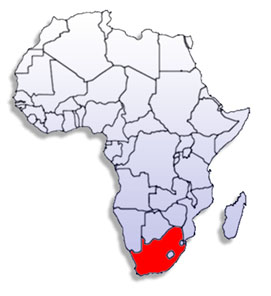The NCR-SA was established as pathology-based cancer registry in 1986 by the then South African Institute of Medical Research, Pathology Division, and the Department of Health. Recognised methods of analysis and routine reporting were introduced in 1990 when Dr F Sitas was appointed as Director. In addition, a Cancer Research Unit funded by the South African Medical Research Council (MRC) was introduced. Between 2002 and 2009, competing burdens of disease in South Africa meant that chronic diseases, and particularly cancers, were not perceived as a priority in the country. As a result, the progress and development of the NCR-SA was arrested due to a lack of funding and human resources support. This lead to a lag in reporting of cancer incidence data, and a decline in publications.
In 2009, NCR-SA was transferred to the Executive Directorship of Dr B Kistnasamy. A new Deputy Director, Dr Danuta Kielkowski was appointed in November 2010. With renewed managerial and financial support, the momentum of the NCR-SA was restored.
Currently the NCR-SA has 12 cancer registry staff including cancer coders, data capturers, a quality assurance manager and an operations manager. A PhD student has been funded by the IDEA programme to conduct a cancer linkage study with HIV treatment cohorts. The Cancer Epidemiology Research Group (CERG), a subdivision of the NCR-SA, consists of a six member scientific team including two nurse field workers involved in a cancer case-control study. The lag in data capturing and analysis is being addressed with the recruitment of additional staff and automation of data capturing processes, with the goal of being up to date with data capturing by in three years time, thus in 2014 we will reach a lag time for routine reporting of two years.
Being a pathology based registry, the NCR-SA captures data for histologically confirmed cancers. It obtains 100% notification from the public sector laboratories due to a data draw-down directly from the public laboratory archives. Only 20% of private laboratories reported to the NCR-SA due to an unfounded concern regarding the release of patient information to an external organization. The registry receives between 90 000 to 100 000 cancer notifications annually, of which between 50 000 to 60 000 are new cancers.
In April 2011, an exciting new development occurred in South Africa with the formalisation of the new National Health Regulations (No 380), which made cancer a notifiable condition. This means that the pathology-based Registry will receive 100% of notifications from both the public and private sector laboratories for 2012.
The Regulations task the NCR-SA with the development of a hospital-based cancer registry. The project will begin with the piloting of a hospital-based registry in one district of South Africa. The Ekurhuleni Health District in Gauteng has an approximate population of 3 million people, with 4 regional and 2 district hospitals in the public health sector. The private health sector consists of 21 private hospitals, two cancer treatment centers and one hospice. A system for healthcare professionals to report every newly diagnosed cancer patient to the NCR –SA has been established in both the private and public sector hospitals in this district.
As part of a study being established, all these notified patients will then be followed up to their referral treatment centers to determine time to treatment for cancer patients in South Africa, predicators of survival and survival status at the end of the study period. This will provide valuable information regarding the status of cancer management services in South Africa to policy makers and health managers. Watch this space for the first report on this cancer registry in 2013.
The following data represents the South African cancer incidence as calculated from the cases reported to the pathology-based Cancer Registry in 2004. The full details of this report can be accessed on the Website.
The graphs demonstrate the ten most common cancers amongst South African men and women in 2004: We have removed from the graphs the highest reporting cancer Basal cell carcinoma as it is benign neoplasm and feature of our pathology registry.

Fig 1 Ten top cancers among men in South Africa in 2004 (incidence rate per 100 000)

Fig 2 Top ten cancers among women in South Africa in 2004 (incidence per 100 000)
There is much work to be done in South Africa in terms of cancer, particularly with regards to health service provision. Once the hospital-based registry is established, South Africa will be in the unique position of maintaining pathology and hospital-based cancer registry, ensuring that accurate, valid and up-to-date data is provided to clinical and public health decision-makers.

Above is a picture of current NCR-SA staff in front from left to right Coding supervisor Ms Dikeledi Rasoasi, Ms Thotoane Malatse and Ms Grace Mapisa cancer coders, next row are Ms Evelyn Nkosi secretary, Dr D Kielkowski Deputy Director NCR-SA, in last row we have Mr. Oriel Mahlatsi data administrator, Ms Miriam Ramela Cancer coder and Ms Patricia Kellet Operations Manager
We providing two maps to show you where our country is at the tip of African continent below Zimbabwe Fig1 and South African map to show where registry is situated Fig 2

Fig 1 Position of South Africa on African continent

Fig 2 Map of South Africa showing position of NCR-SA in Johannesburg
